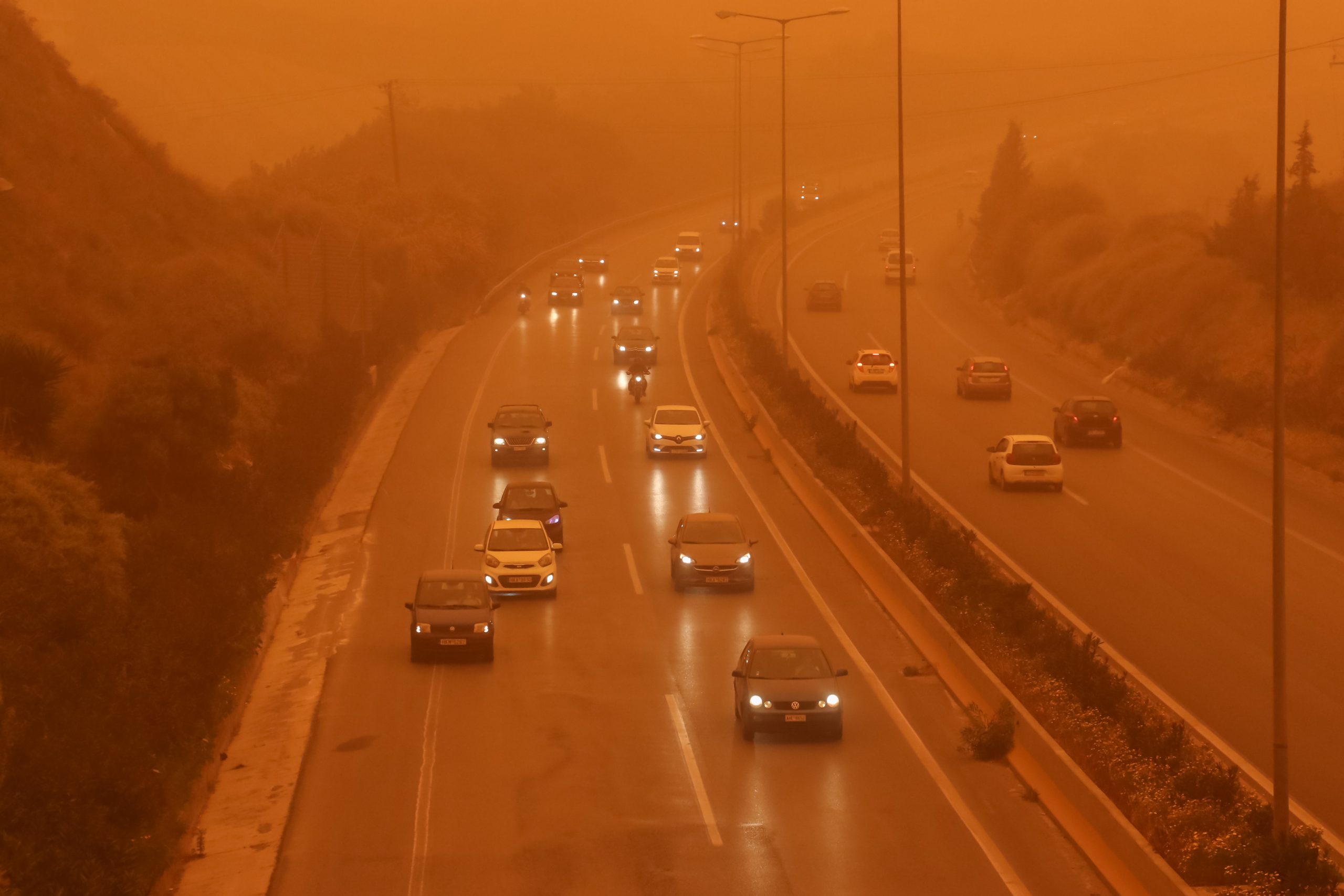The current bout of African dust has painted Greece’s skies an unappealing greyish-brown hue, while unseasonal temperatures make people wonder why they ever put their summer clothes away.
Yesterday, temperatures exceeded 30 degrees Celsius in Crete, reaching an insane 32.6 degrees in the city of Chania, the highest the island has seen this time of year since 2010.
Specifically, according to meteorologists, temperatures recorded this season are 4 to 7 degrees the normal levels expected this time of year.
Dust from the Sahara desert has settled on the Athens skyline these past few days, turning any rainfall into mud showers.



